060716_YKMV_A11.pdf






shop online at www.missourivalleyshopper.com
June 7, 2016 • Page 11
Soybean Protection Practices
BROOKINGS, S.D. - Today,
soybean producers spend
88 percent more on crop protectant products than they
did six years ago.
“Aside from seed
expense, crop protection
products (chemicals) are
the most expensive input
soybean producers pay for,”
said Tong Wang, SDSU Extension Advanced Production
Specialist, referencing the
2015 farm enterprise analysis data from FINBIN, the
farm financial management
database, which showed the
average cash-rent soybean
production farms in Minnesota, North and South Dakota incurred a crop chemical
cost of $39 per acre.
To help producers reduce
expenses, Wang encourages
growers to consider modifying their pest management
practices to include nonchemical options.
“Growers have other,
preventative options,” Wang
said.
She listed no-till and seed
treatments as preventative options to help control
weeds and insects.
Even though chemicals
are expensive, according to
the 2015 National Ag Statistics Survey (NASS), Agricultural Chemical Use Program
survey results, released
May 13, 2016, between 2012
and 2015 there was only a
modest increase in adoption
of other prevention practices among South Dakota
Soybean Producers.
“NASS conducts annual
surveys to help producers
reduce their dependence on
agricultural chemicals. As
Table 1 indicates, no-till and
seed treatments, the two
most important prevention
categories, have been adopted by a higher percentage of
production fields. However,
the adoption rate for avoidance practices has declined.
For example, the percentage
of producers choosing crop
variety for pest resistance
has dropped by 20 percent,”
Wang said.
Importance of scouting
With the emergence of
glyphosate resistant weeds,
planting of glyphosate
tolerant crops is no longer
the most effective way to
control weeds. It is likely the
reason that the United States
Department of Agriculture
Economic Research Service
data indicated that the percent of glyphosate tolerant
soybean planted in South
Dakota dropped slightly from 98 percent in 2012 to 96
percent in 2015.
Wang said glyphosate
resistance may also be the
reason more South Dakota
growers are scouting their
fields for weed and pest
pressure today than in the
past. The NASS survey
showed monitoring fields
increased slightly since 2012.
“Weed monitoring was
carried out by 99 percent of
South Dakota soybean producers in 2015. This shows
that most South Dakota
soybean producers note the
importance of monitoring in
making further suppression
decisions (Table 1).”
Herbicides use on the
rise
Glyphosate resistant
weeds may also be the reason that herbicide usage in
soybean fields in on the rise.
The NASS survey showed
that while soybean acres
increased 30 percent from
3.95 million acres in 2006 to
5.15 million acres in 2015,
total herbicide use increased
61 percent.
“Over the past decade,
glyphosate usage has gradually declined, both in terms
of percentage of planted
acres and total amount applied,” Wang said.
She added. “The disproportional increase in nonglyphosate herbicide usage
compared to acre planted
could partly explain the
increase in crop chemical
expenditure in soybean production in recent years on a
per acre basis,” Wang said.
Glyphosate products
control weeds by preventing
amino acid synthesis.
“Extensive reliance on a
single herbicide by so many
producers has eventually
resulted in the emergence of
glyphosate-resistant weeds
on many farms. As a result,
herbicides that rely on different modes of action began
to be adopted by more and
more producers (Table 3),”
Wang said.
Ground covers and physical barriers
According to the NASS
survey, 65 percent of South
Dakota soybean producers
maintained ground covers,
mulches or other physical
barriers to manage pests.
“This rate is much higher
when compared to the 2012
SD average of 45 percent,
or when compared to the
2015 national average of 44
percent,” Wang said.
Cost effective weed-management choices to consider
To manage glyphosate resistance more cost effectively, Wang encourages soybean
producers to consider the
following weed-management
choices:
1. Combine glyphosate
with herbicides of different
modes of action;
2. Do not apply glyphosate during consecutive
growing seasons.
3. Because weed seeds
can be easily carried between fields by wind, water,
animals and movement of
farm equipment, the most
cost effective weed management is achieved when
neighboring farms take collaborative actions.
To view the NASS survey
in its complete form, visit
the USDA NASS website.
Table 1. Top two practices in each pest management category, measured in
% of soybean planted acres,
South Dakota, 2012 and 2015.
Category
Top-2 practices
2012
2015
% Change
Prevention
No-till or minimum till
used.
70
77
10%
Seed treated for insect
or disease control after
purchase.
53
62
17%
Avoidance
Rotated crops during the
past 3 years.
96
92
-4%
Crop or plant variety
chosen for specific pest
resistance.
65
52
-20%
Monitoring
Scouted for weeds.
96
99
3%
Scouted for insects &
mites.
94
96
2%
Suppression
Ground covers, mulches,
or other physical barriers
maintained.
45
65
44%
% of planted acres
average application
(lbs/ac/yr)
total applied (Million lbs)
2006
Glyphosate isopropylamine salt.
97
1.31
5.05
Flumioxazin.
6
0.07
0.02
Trifluralin.
5
1.15
0.22
2012
Glyphosate potassium
salt.
60
1.54
4.40
Glyphosate isopropylamine salt.
39
1.39
2.56
Clethodim.
16
0.07
0.06
2015
Glyphosate potassium
salt.
65
1.59
5.33
Sulfentrazone.
30
0.18
0.28
Glyphosate isopropylamine salt.
27
1.29
1.78
Data Source: USDA NASS
- See more at:
http://igrow.org/news/
soybean-protectionpractices/#sthash.6cZki4iz.
dpuf niGrow
Scouting data compared
to published information to
assist decisions.
27
35
30%
Data Source: USDA NASS
Table 2. Pesticide applied
to soybean planted areas in
South Dakota, 2012 and 2015.
2006
2012
2015
% of planted acres
total applied (mil lbs)
% of planted acres
total applied (mil lbs)
% of planted acres
total applied (mil lbs)
Herbicides
99
5.62
97
7.77
93
9.03
Insecticides
21
0.11
17
0.36
29
0.29
Fungicides
21
NA
5
0.08
5
0.03
Data Source: USDA NASS
Table 3. Top three herbicides applied to soybean
planted acres: 2006, 2012
and 2015.
Active ingredient
Looking
for the
best deal in
town?
Check
the
Soil Stewardship for Healthy Landscapes
BROOKINGS, S.D. - While
land-use throughout South
Dakota continues to change,
SDSU Extension and South
Dakota NRCS are hosting
Soil Stewardship for Healthy
Landscapes workshops
throughout the state to
discuss the future of one of
our most precious resources
- our soil.
“We will discuss questions like, ‘what sorts of
risks will be faced in terms of
soil loss?’ ‘What can be done
to turn the tide?’ and more
during these workshops,”
explains Roger Gates, Professor & SDSU Extension Rangeland Management Specialist.
Three workshops will be
held in Watertown, Pierre
and Sioux Falls. Workshops
will begin at 9 a.m. (CST) and
conclude by mid-afternoon.
A noon lunch will be served.
There is no cost to attend
the workshops, which are
funded in part by the South
Dakota Discovery Center.
Registration will assist organizers in planning for the
events. To register visit the
Soil Stewardship workshop
event.
Workshop details
Watertown, June 14, 2016,
at the SDSU Extension Watertown Regional Center (1910
W. Kemp Ave., Watertown);
Pierre, June 15, 2016 at
the Capital University Center
in Pierre (925 E Sioux Ave.,
Pierre, SD 57501);
Sioux Falls, June 16, 2016
at the SDSU Extension Sioux
Falls Regional Center (2001
E. Eighth St., Sioux Falls).
The workshop’s featured speaker is Jay Fuhrer,
Soil Health Specialist for
North Dakota USDA-Natural
Resources Conservation
Service. Fuhrer has spent a
career developing and implementing sound management
principles that sustain and
enhance soil productivity.
He will lead a morning
presentation and facilitate
afternoon discussions during
a tour of leading farm operations.
The day’s concluding session will share information
from both public and private
conservation organizations
that provide technical and
financial support for land
stewardship, practices that
promote soil health and
habitat maintenance and
improvement.
More about the importance of soil stewardship
During the middle of the
20th Century, Gates shares
a story where a European
visitor asked an Iowa farmer,
“how deep does your black
soil go?” to which the farmer
is reported to have answered
“All the way, I guess.”
“This rich, black topsoil,
that has supported agriculture and indeed, national
prosperity since the time of
settlement in the nineteenth
century, resulted from longterm development beneath
the extensive Great Plains
prairies,” Gates explains.
“The farmer’s answer portrays a long held attitude
that this extraordinary
resource was inexhaustible.”
Prairie-Derived Soils at
Risk
Research focused on both
agricultural production and
natural resource conservation has revealed that
mollisols, the prairie derived
soils that support U.S. grain
production which exceeds
levels anywhere else on the
globe, are at ever greater
risk from degradation and
erosion.
Decisions to cultivate
previously undisturbed
grasslands contribute to
the growing risk. Several
recent studies have evaluated changes in land cover
in an effort to document
how changes may influence
sustainability of desirable
landscapes.
One study, Estimated
South Dakota Land Use
Change from 2006 to 2012,
documented recent land use
changes in South Dakota
from spatial images and
land cover classifications.
An economic study, New
SDSU Survey on Land Use
Decisions Highlights Role
of Grasslands, described
31 H.P. Kawasaki, 72” Deck,
960 Hours
$5,900
Zero Turn w/
Steering Wheel
32” Deck with bagger
$3,275
RiveRcity
treasures & Pawn
301 E. 3rd Street, Yankton, SD
665-3588
For Big Squares
14’ x 54’, 25’ x 54’,
33’ x 54’
All Tie Downs Included
We have all the
equipment to keep
your lawn beautiful
5 miles West of Tyndall on Hwy. 50 Corner of Hwys. 50 and 37
www.schuurmansfarmsupply.com
MV Shopper
319 Walnut St.
Yankton, SD 57078
MV Shopper
M I S S O U R I VA L L E Y
M I S S O U R I VA L L E Y
n
605-665-5884
MV Shopper
MV Shopper
M I S S O U R I VA L L E Y
Book 61
Sudoku #1
6 3 7 1
1 4 8 5
5 2 9 6
4 8 1 2
9 5 6 4
2 7 3 9
3 9 2 7
8 6 4 3
7 1 5 8
Schuurmans Farm Supply
Pre
HAY TARP SALE!
Owned
2009 Hustler Super Z
CLASSIFIEDS!
Challenging Sud
Fill the puzzle so that every row, every column, and every
section contain the numbers 1-9 without Rrepeating a number. Sudoku #6
Sudoku #5
M I S S O U I VA L L E Y
Book 61: Answers
Intermediate Sudoku Puzzles by KrazyDad
Nice Selection,
Great Savings,
Flat Screens &
Electronics
June
Special
2016 Toro
TimeCutter SWX3200
how financial conditions
contributed to the decision
to maintain or convert land
use. Another study entitled
Forecasting Unintended Consequences of Grassland Conversion modeled a range of
complex, interacting factors
to understand and predict
how conditions modify land
use decisions using a Systems Dynamics approach.
This study also forecasted
future land use change under
various economic and social
scenarios.
iGrow
Ph. (605) 589-3909 or Cell (605) 464-1113
8 4 5
9 2 6
3 7 1
7 6 3
1 3 7
5 8 4
6 1 8
2 5 9
4 9 2
3
3
9 2
7 3
8 4
5 9
2 8
6 1
4 5
1 7
3 6
1
6 5
4
Sudoku #3
3 2 5 7 1 8 9 4
1 6 4 5 2 9 7 3
7 9 8 6 4 3 1 2
2 5 3 1 9 6 4 8
6 4 1 2 8 7 3 5
9 8 7 4 3 5 6 1
5 3 2 9 6 1 8 7
4 CHALLENGING 9
1 6 8 7 2 5
8 7 9 3 5 4 2 6
4
9 8 2
4
8
7
1 5 4 8 7 3
Sudoku 9
6 3 7 1 2#7
8 2 9 5 4 6
5 9 2 4 3 8
3 8 6 7 9 1
4 7 1 2 6 5
2 6 3 9 5 4
7 1 5 3 8 2
9 4 8 6 1 7
8
5
9 #4
Sudoku 8
6
1
7 6 3 8
2 1 3
2
49
6
8
5
7
4
2
3
1
6 2 9
5 8 4
1 7 3
7 6 1
4 5 2
3 9 8
8 1 7
9 4 6
2 3 5
2
5
8
Sudoku #6
5 1 2 6 4
8 9 3 2 1
6 4 7 3 5
© 2008 7 3 8 4 9
KrazyDad.com
1 6 9 8 2
4 2 5 1 7
3 8 1 9 6
2 5 4 7 8
BOOK 61 9 7 6 5 3
#5
1 2
5 9
6 7
3 6
8 4
2 5
9 3
7 1
4
9 8 7
7 6 4
8 2 1
6 5 2
5 4 3
3 9 6
4 7 5
1 3 9
2 1 8
3 5
7 4
6
6
4
4 8
9
7 2
5
9
2
8
3
5Sudoku
#8
2
9
1
7
8
Check next Tuesday’s paper for
7 9 1
the solution to today’s puzzle. 2
INT
Wanted:
9
6 1 9
3 2
Scrap Iron
• Grain Bin Removal
Paying Top Dollar
Will Pick Up
7
7 5 8
1 3 2
9 6 4
3 4 9
2 8 6
5 7 1
4 1 7
8 2 3
6 9 5
su do ku
9
5
7 6
Gubbels
Sudoku #7
3 2 4 8 5 1 9 7 6
9 5 7 2 6 4 1 8 3
1 8 6 7 9 3 5 2 4
8 1 9 3 7 5 4 6 2
5 6
2 8
7 3 • Old4Cars 9 1
4 6 2 9 1 8 7 3 5
• Farm5 Machinery
3 9 6 4 8
2 7 1
• 5Irrigation Systems
9 3 4 8 6 2 1 7
6 • Any Type 3of5 9
4 8 1 2 7
6 1
8 5
2 7
1 6
9 4
3 2
5 3
7 9
4 8
7 9 3
1 2 4
5 4 8
9
9
5 8 7 1
5 3 7 1 2 6 9
8 1 6 4 9 3 7
6 8 5 7 4 1 2
© 2008 KrazyDad.com
3 4 2
6 8
CH BOOK961 #5 5
1 7 9 2 3 5 6
4
7 8 2
9
2 4
Last Tuesday’s
Sudoku Solution
#5
Sudoku #2
9 2 3 4
6 4 7 9
1 5 8 3
2 8 5 7
3 7 1 5
4 9 6 8
8 6 9 2
5 1 4 6
7 3 2 1
2
Sudoku #8
3 5 7 6
2 6 8 3
1 9 4 8
5 7 3 1
8 2 6 9
4 1 9 7
7 3 5 4
9 4 1 2
6 8 2 5
4 9
salvaGe
8
4 2
9 1
5 7
2 6
3 4
8 5
1 8
1
5
2 3
4 9
1 7
6 2
9 6
6 3 5 8
7 9 3 4
6
8
7
4
Towing Service 8
© 2008 KrazyDad.com
& Roll-Off Dumpsters Available
4
7
6
4
9
4
6
8
5
3
2
7
1
8 5
3
9
4
3
1
4
5 8
1-402-640-6335
Coleridge, NE
KRAZYDAD.C



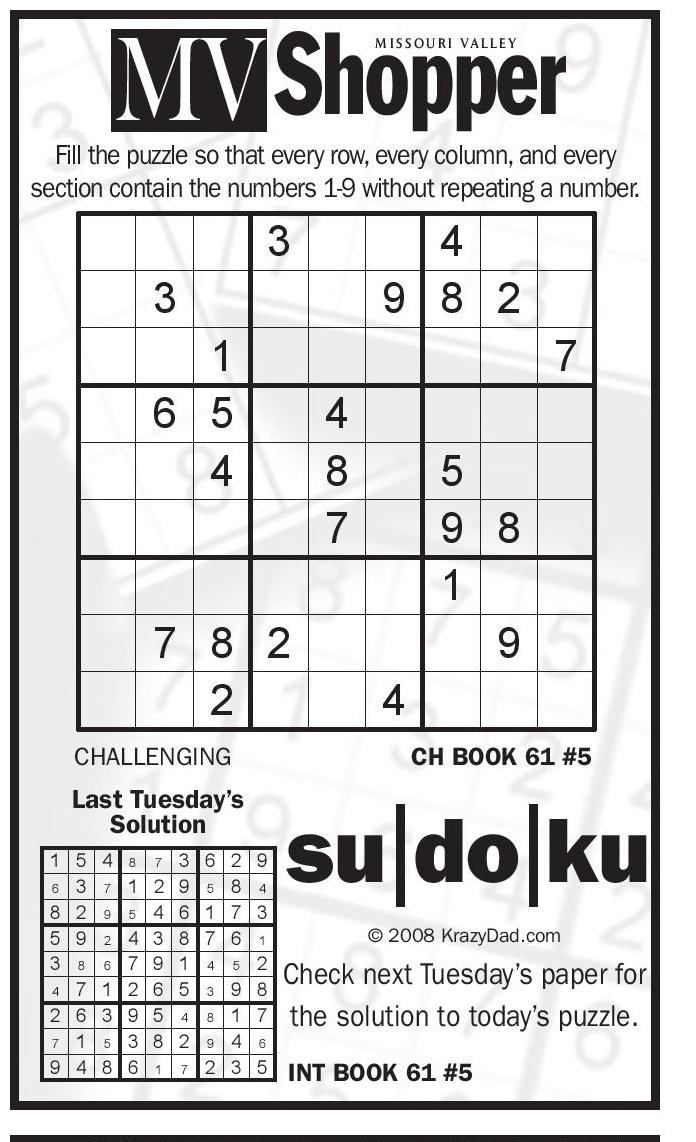
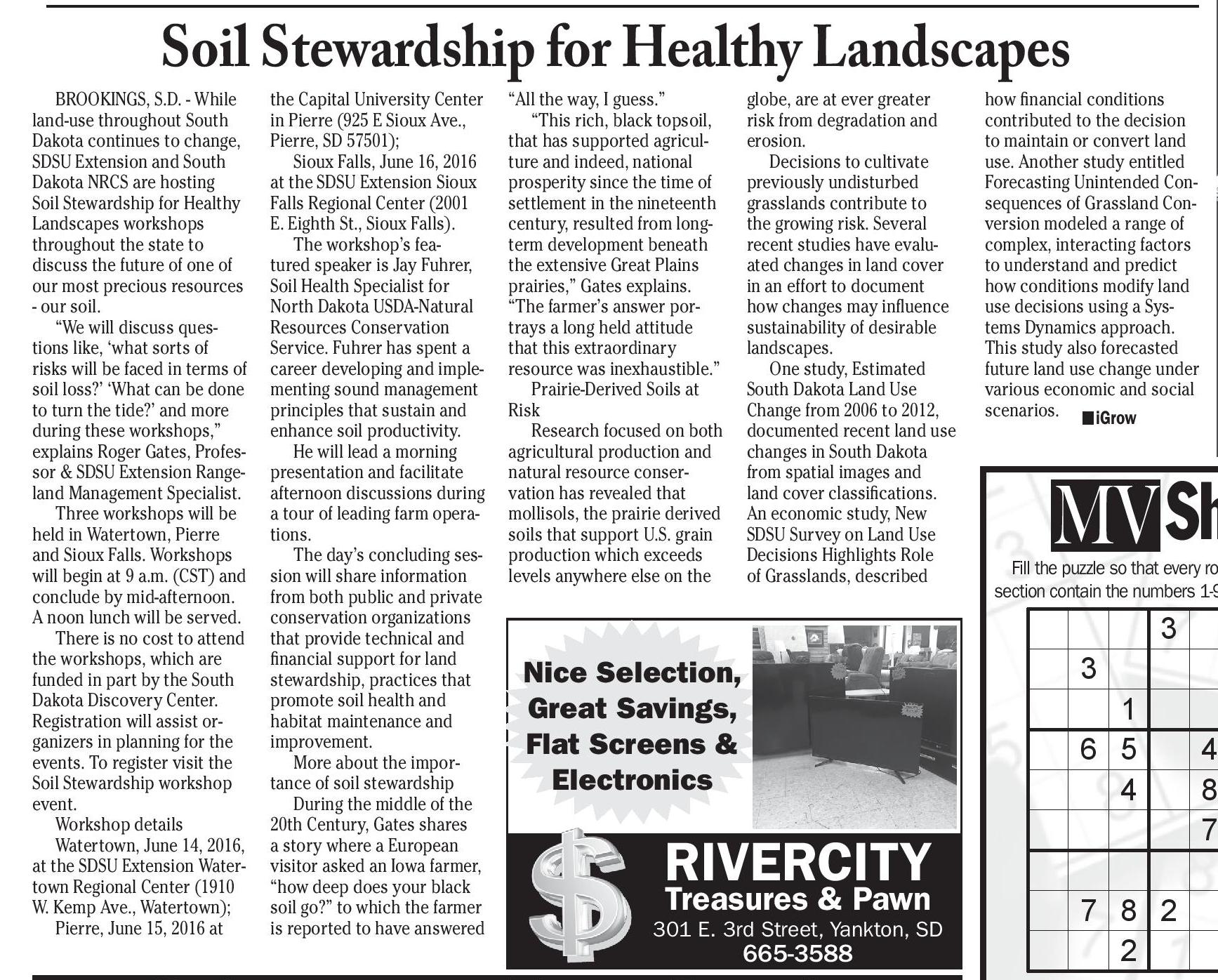





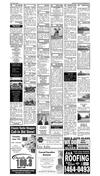
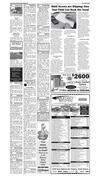





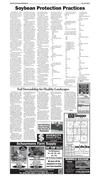
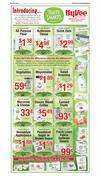
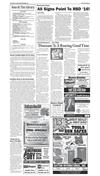

 Previous Page
Previous Page





